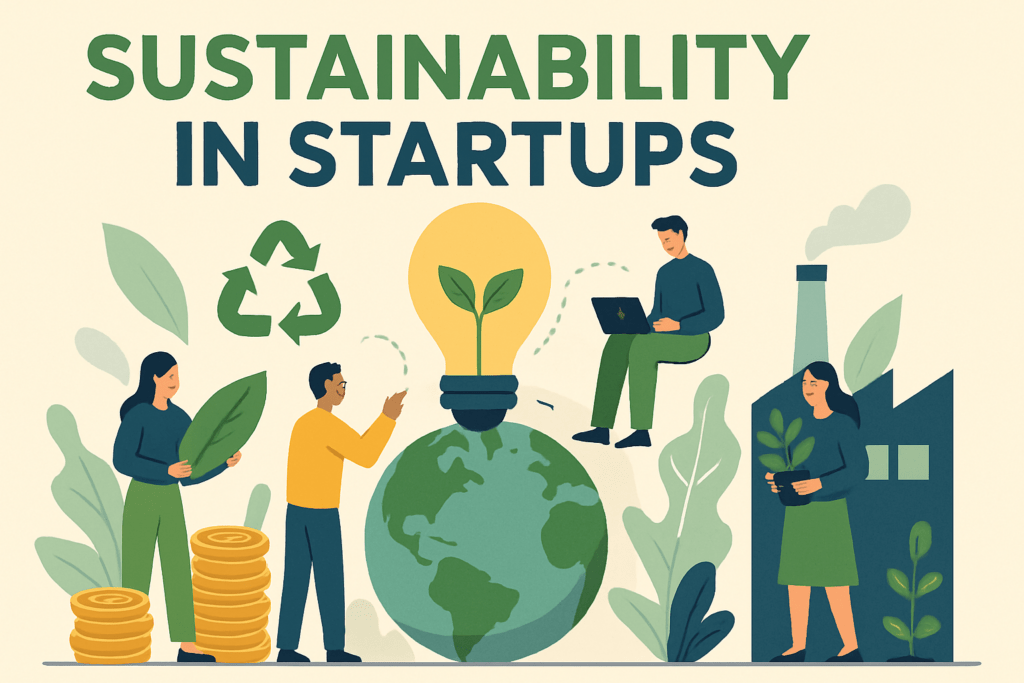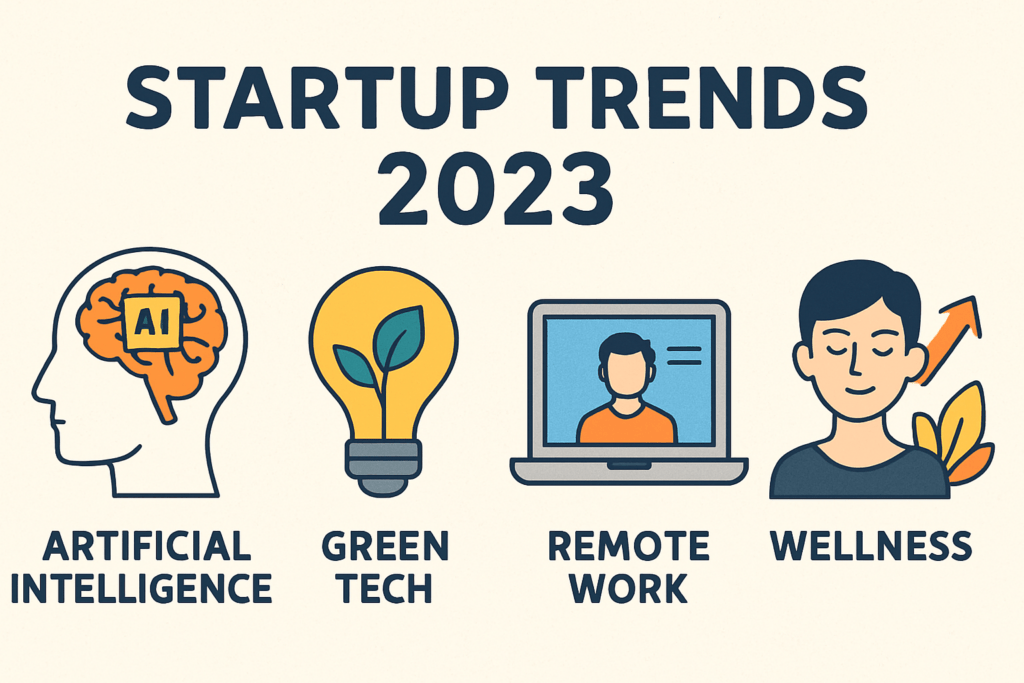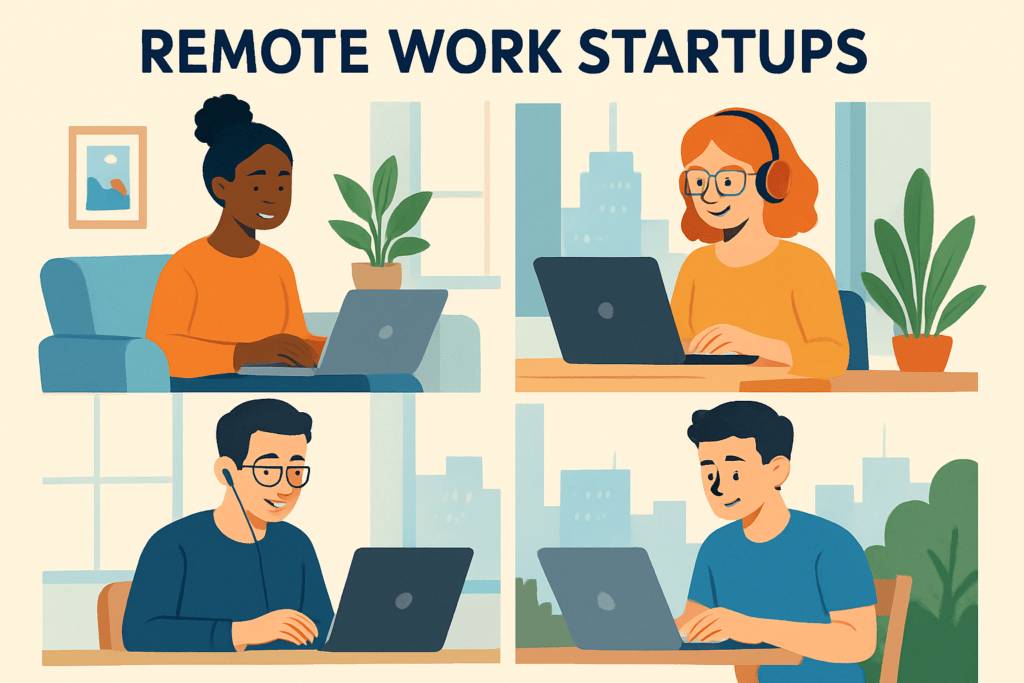Why Sustainability in Startups Is a Game-Changer
- Set the stage: Why investors, customers, and talented hires all care about eco-friendliness.
- Use the main keyword: sustainability in startups.
- State how startups have unique advantages in building greener models compared to legacy companies.
Why Sustainability in Startups Is a Game-Changer
Sustainability in startups isn’t a fluffy trend; it’s the new backbone of survival and growth. Investors are insisting on eco-cred, not just for show, but because green startups hedge against regulatory risks and tap into markets that are only getting bigger. Customers? Brands might get a pass once, but word travels fast—if your startup cuts corners environmentally, you’ll lose people to competitors who care. And let’s not forget talent: The best engineers and marketers want to work somewhere that feels meaningful, not just money-driven.
But why do startups, specifically, have a unique shot at making sustainability core to their business models? Legacy companies are tangled in old supply chains, fixed product lines, and “that’s-how-we’ve-always-done-it” thinking. Startups, on the other hand, are blank slates. You get to bypass years of bloat and design with circularity or low-impact methods from day one. Embedding sustainability in startups isn’t just a nice-to-have; it’s a straight-line path to relevance—and often, to outpacing the dinosaurs too slow to pivot.
Building Blocks: How Startups Prioritize Sustainable Practices
No fluff—sustainability in startups starts with daily choices that stack up fast. You don’t need a PhD or a million-dollar budget to get going. The fundamental building blocks? Start with energy savings. Ditch old-school lightbulbs, move to cloud services designed for lower emissions, and lean into remote work policies. Every watt (and dollar) counts. Next: responsible sourcing. For any eco-friendly business, it’s about knowing where your materials come from. Choose suppliers who are transparent on their practices (and call them out if they aren’t). Go local when you can—shipping less stuff less far cuts your footprint.
Think about product lifecycle early and often. Build things to last, not just to sell. Design a path for repair, reuse, or recycling into your planning from day one. It’s much easier to set up a take-back program when your customer base is small, and the agility of startups is a superpower here. Maybe your competitor’s stuck with legacy systems—good. You can pivot: switch materials, update packaging, launch a tree-planting partnership, or roll out new eco-labels in a matter of weeks, not years. Sustainable practices aren’t a side quest for startups; they’re the whole map. Use your size as an advantage—rapid changes, zero bureaucracy. The greenest solution you use tomorrow might not even exist today, but you can be the first mover as soon as it does.
Green Entrepreneurship That Actually Scales
Here’s what doesn’t get talked about enough: in startups, green entrepreneurship isn’t just a slide on a pitch deck—it's a slog through tough daily choices. But done right, it’s exactly what sets fast-growing companies apart. Let’s look at a couple of real-world examples:
Take Too Good To Go, an app fighting food waste. From day one, their founders set out to match profit and purpose, rescuing surplus food from stores and eateries. No pie-in-the-sky ideals here; their model works because customers want a good deal, and stores can cut losses—everyone wins, plus the planet. They don’t just talk the talk. Every dashboard, every team meeting, tracks meals saved. It’s not “side project green”—it’s the business.
Or peek at Allbirds, which turned sustainable materials into a competitive edge. Early on, they bet the whole brand on carbon-neutral shoes. That made every supply decision a test: “Can we pick the greener option, or will it crack our margins?” Their founders chose purpose over shortcuts, but—here’s the kicker—being obsessively green drove their breakout following.
What do these founders have in common? They sweat the details. Sourcing. Manufacturing. Delivery. Some days, there’s no perfect answer, just a less-bad one. But they stick with it. Profit still matters—frankly, it has to—but it runs in parallel with environmental impact, not behind. Green entrepreneurship at a startup pace means living these tradeoffs, doubling down on transparency with every hard call. And maybe that’s the most practical form of leadership startups have to offer: showing you can build something new and make it green enough to scale up, not scale out of existence.
The Business Case: Funding, Talent, and Global Reach
Here’s the hard truth: sustainability in startups isn’t just tree-hugging or empty PR. For founders building with green in mind, it’s a tactical edge. VCs are narrowing in on eco-friendly business models—some funds exist for this sole purpose, and “ESG” is more than a buzzword in their partner meetings. If your pitch deck shows climate impact built into the core of your product, you aren’t just polishing your halo—you’re opening new avenues for capital.
It’s not just about cash, though. Top-tier talent—especially Gen Z and millennials—won’t sign on just for a paycheck. The kind of people you want (hungry, smart, multi-skilled) are allergic to companies ignoring sustainability. They want their work to count for something, and if you build with sustainable practices, your mission does at least half the recruiting.
Look at what’s happening in cities like Amsterdam, Berlin, and Toronto—startup hotbeds investing heavily in green entrepreneurship. Local governments are offering grants, tax breaks, and even workspace incentives if you can show you’re green. This isn’t just lip service. When impact investors, municipal leaders, and accelerators are all aligning around eco-friendly innovation, you get a global runway for your product. Being sustainable now means you don’t just scale faster—you scale everywhere.
Each winner's journey is unique, navigating through a blend of financial management, lifestyle adjustments, and personal decisions about the legacy they wish to leave. The ways they choose to manage newfound wealth can illuminate pathways to enduring prosperity or lead to cautionary tales of loss.
What Happens After Winning Millions?
Winning a life-changing lottery jackpot is every player’s dream, but few are prepared for what comes next. The sudden influx of wealth can bring excitement, but also a wave of challenges. Many winners find themselves overwhelmed by financial decisions, from managing taxes to making smart investments. Some handle it well, while others struggle with reckless spending that drains their fortune faster than expected.
The Financial Reality of Winning
Many winners face critical financial decisions almost immediately:
- Taxes and Legal Issues: A large chunk of the winnings often goes to taxes, and failing to plan can lead to legal troubles.
- Investing vs. Spending: Some winners hire financial advisors to ensure long-term security, while others spend impulsively without a plan.
- Budgeting for the Future: Without proper money management, even the biggest jackpots can disappear quickly.
A Lifestyle Overhaul
A sudden fortune changes life in more ways than one:
- Luxury Purchases: Mansions, sports cars, and extravagant vacations become instantly affordable.
- Social Pressure: Long-lost friends and distant relatives often reappear, expecting a share of the winnings.
- Privacy Challenges: Some winners struggle with unwanted media attention and public scrutiny.
While some winners embrace their new wealth openly, others choose to live discreetly to avoid pressure and expectations.
Giving Back and Creating a Legacy
For some, wealth is not just about personal luxury—it’s an opportunity to make a difference. Many winners choose to:
- Donate to charities and community projects
- Fund scholarships or support education initiatives
- Invest in businesses that create jobs and opportunities
Some lottery winners go from players to philanthropists, proving that wealth can be used to leave a lasting impact. However, not all stories end positively—many who fail to manage their winnings properly find themselves bankrupt within years.
Conclusion: Startup Success is Tied to Sustainability
Here’s the bottom line: sustainability in startups isn’t a token checkbox. It’s a necessity, and more than that—it’s a strategic edge built into the DNA of every high-impact new venture. Whether you’re bootstrapping in your garage or scaling with global investors, weaving eco-friendly choices into each layer of your business gives you staying power. Don’t just slap “green” on your homepage; build your processes, products, and team culture to walk the talk every day. When sustainability is your default operating system, you attract smarter capital, retain better people, and reach customers who actually care. The payoff? Not just a healthier planet, but a healthier business—one that’s primed to lead the next generation. Make sustainability the baseline, and let your startup grow for good.




